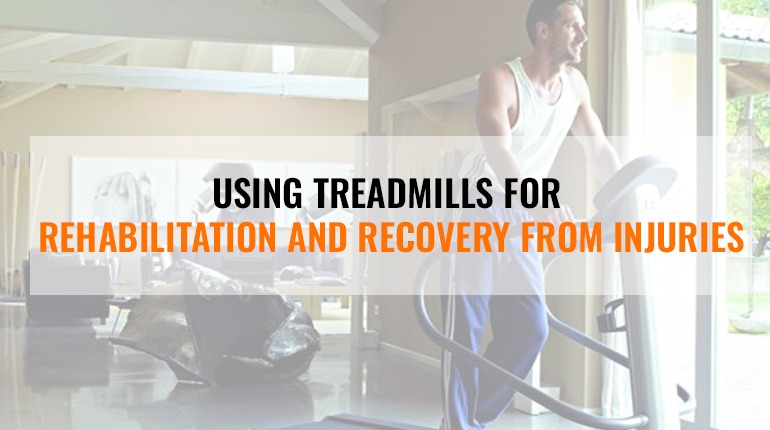Empower your Recovery With 9 Treadmill Benefits For Rehabilitation

In the world of fitness and exercise, the treadmill has long been a popular choice for individuals seeking to improve their cardiovascular health and shed a few pounds. However, this versatile machine has also found a valuable place in the realm of rehabilitation and physical therapy. With its adjustable settings and controlled environment, the treadmill offers a safe and effective way of rehabilitation and recovery from injuries, regaining mobility, and rebuilding strength. In this article, we will explore the treadmill benefits for rehabilitation and recovery purposes and delve into how this machine can aid in the recovery process.
Ways in which Treadmills Aid Rehabilitation and Recovery
Treadmills offer a controlled and safe environment for recovery, allowing healthcare professionals to closely monitor and adjust the exercise parameters. Gradual intensity progression and tracking of performance metrics promote physical improvement and motivation. The dynamic nature of treadmill workouts makes the experience engaging and mentally stimulating. Treadmills aid rehabilitation and recovery by restoring independence, boosting confidence, and can be adapted for various injuries or conditions. Specialized equipment caters to upper body injuries and diverse rehabilitation needs.
Treadmills can be particularly beneficial for individuals recovering from orthopedic injuries, such as fractures or joint surgeries. Incorporating a treadmill into rehabilitation programs also promotes functional movements. By simulating activities such as walking, jogging, or running, patients can work on specific movement patterns and muscle groups essential for their daily activities or sports.
Here are some ways in which a treadmill can assist in the recovery process:
1. Gradual Benefits of Treadmill for Rehabilitation and Recovery:
A treadmill provides a controlled surface for individuals recovering from injuries, allowing them to gradually regain strength and mobility. By adjusting the speed and incline, therapists can customize the intensity of the exercise to suit the patient’s specific needs, gradually increasing the challenge as they progress.
2. Gait Training:
Treadmills are particularly useful for gait training, which involves relearning or improving the proper walking or running technique. Through real-time visual feedback, patients can observe their stride, posture, and foot placement, enabling them to make necessary adjustments under the guidance of a therapist for a steady state of rehabilitation and recovery.
3. Weight-Bearing Treadmill Benefits for Rehabilitation:
Depending on the injury or condition, weight-bearing exercises can be beneficial for rehabilitation and recovery. Treadmills allow individuals to bear their body weight while walking or running, aiding in bone density improvement and muscle strengthening. This can be especially valuable for those recovering from fractures, joint surgeries, or neurological conditions.
4. Cardiovascular Conditioning:
Regular cardiovascular exercise is important for overall health, even during the recovery process. Treadmills allow individuals to engage in low-impact cardiovascular workouts that can enhance heart and lung function. By gradually increasing the duration and intensity of the exercise, patients can improve their endurance and stamina over time.
5. Psychological Treadmill Benefits for Rehabilitation and Recovery:
Physical therapy and injury recovery can be mentally challenging. Treadmills provide a familiar and accessible platform for individuals to engage in physical activity, promoting a sense of accomplishment and well-being. The act of walking or running can also release endorphins, improving mood and reducing stress.
6. Functional Movement Training:
Treadmills equipped with adjustable inclines and built-in harness systems can facilitate functional movement training. By simulating activities like stair climbing, hill walking, or even jogging, individuals can work on specific movement patterns and muscle groups necessary for their daily activities or sports.
7. Monitoring the Progress:
Many modern treadmills come with advanced features like heart rate monitors, speed and distance tracking, and performance data analysis. These tools enable therapists to closely monitor the progress of their patients, make informed adjustments to their rehabilitation program, and provide objective feedback to guide a speedy rehabilitation and recovery.
8. Aquatic Treadmill Therapy:
Aquatic treadmill therapy combines the benefits of water therapy and treadmill training, providing a low-impact, ‘buoyant’ environment for weight-bearing exercises that aid in muscle strength and cardiovascular fitness during recovery from injuries or conditions like arthritis. Water resistance can also add an additional challenge to workouts, strengthening muscles and improving cardiovascular fitness.
9. Postural Alignment:
Treadmills with integrated mirror systems or biofeedback sensors can help individuals with postural alignment issues. By providing real-time feedback on posture, gait, and body mechanics, these tools assist in correcting imbalances, optimizing movement patterns, and reducing the risk of future injuries.
Unleashing the Potential: Enhancing Treadmill Benefits for Rehabilitation and Recovery Journey
In conclusion, the treadmill is not just a tool for fitness enthusiasts or weight loss seekers. Its versatility, adjustability, and controlled environment make it an invaluable asset in the realm of rehabilitation and physical therapy. Whether it’s recovering from a sports injury, regaining mobility after surgery, or undergoing gait training, the treadmill offers a safe, effective, and engaging platform for patients to recover and rebuild their bodies. With its ability to gradually increase intensity, promote cardiovascular health, and boost mental well-being, the treadmill is a powerful ally in the journey toward rehabilitation and recovery.
Remember, these suggestions are meant to inspire and provide a general overview of how a treadmill can assist in recovery and physical therapy. It’s essential to consult with healthcare professionals or physical therapists to develop a tailored plan that meets your specific needs and goals.

